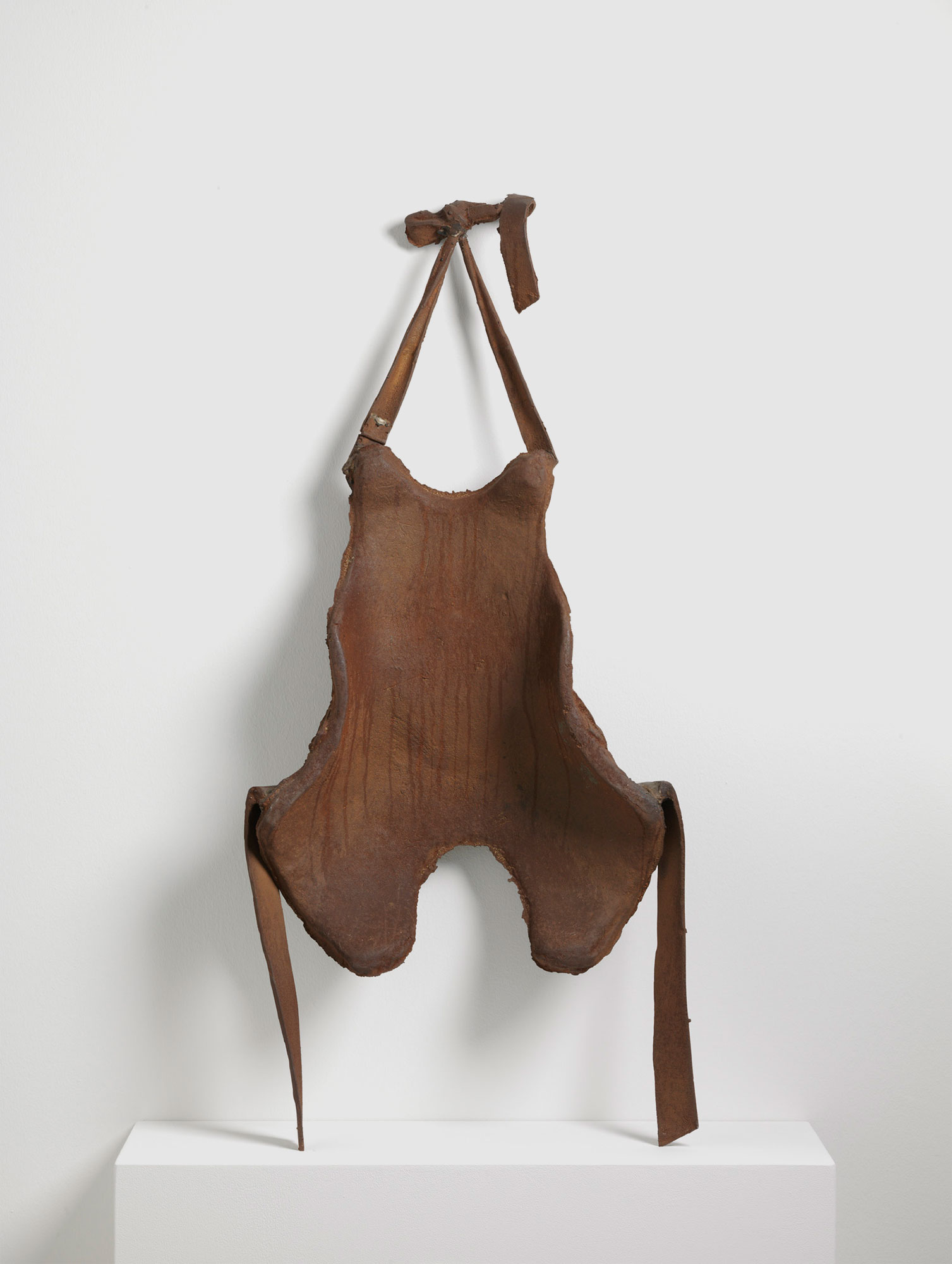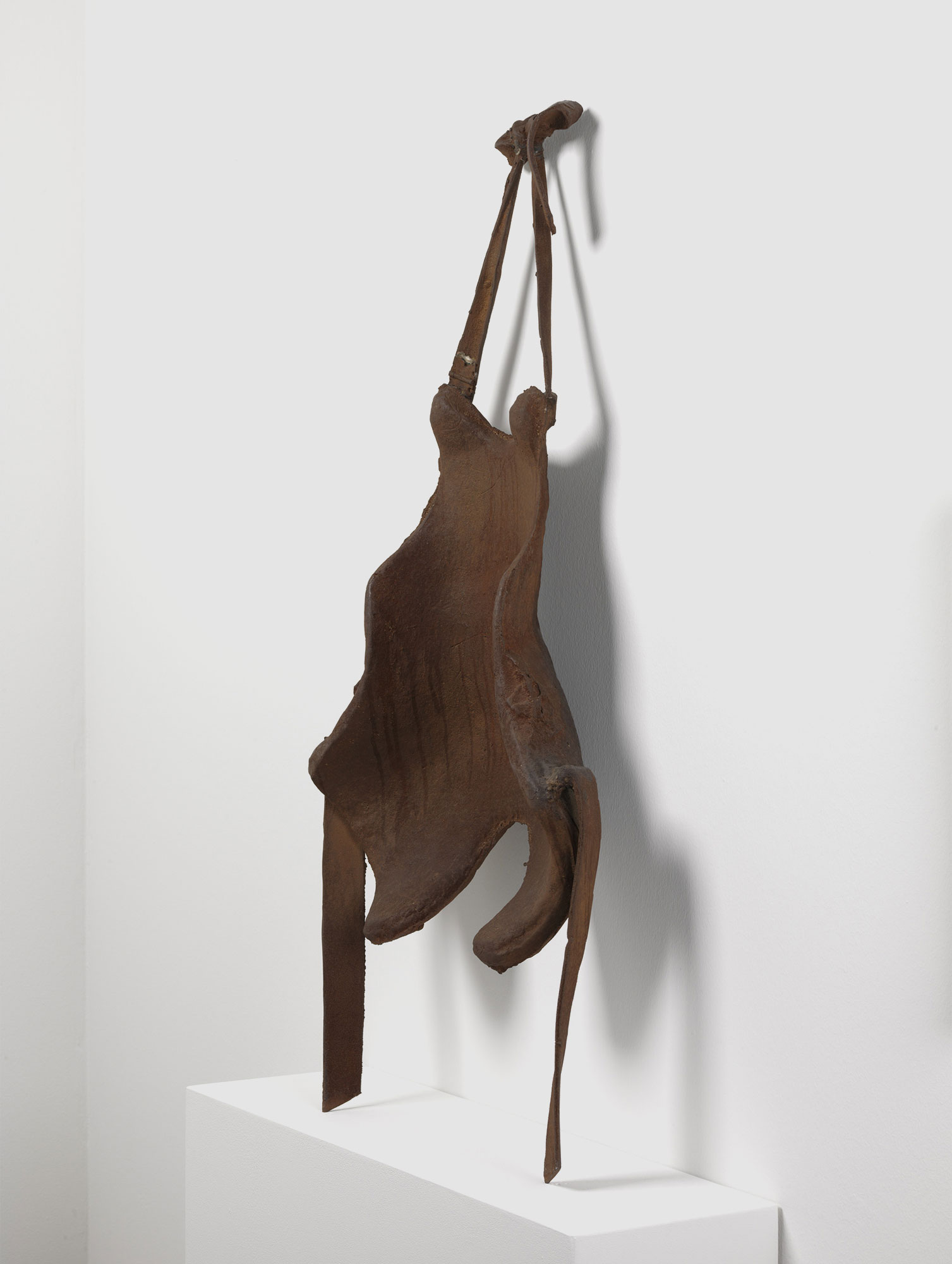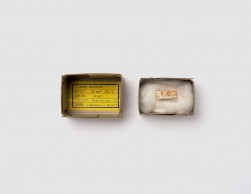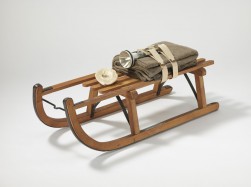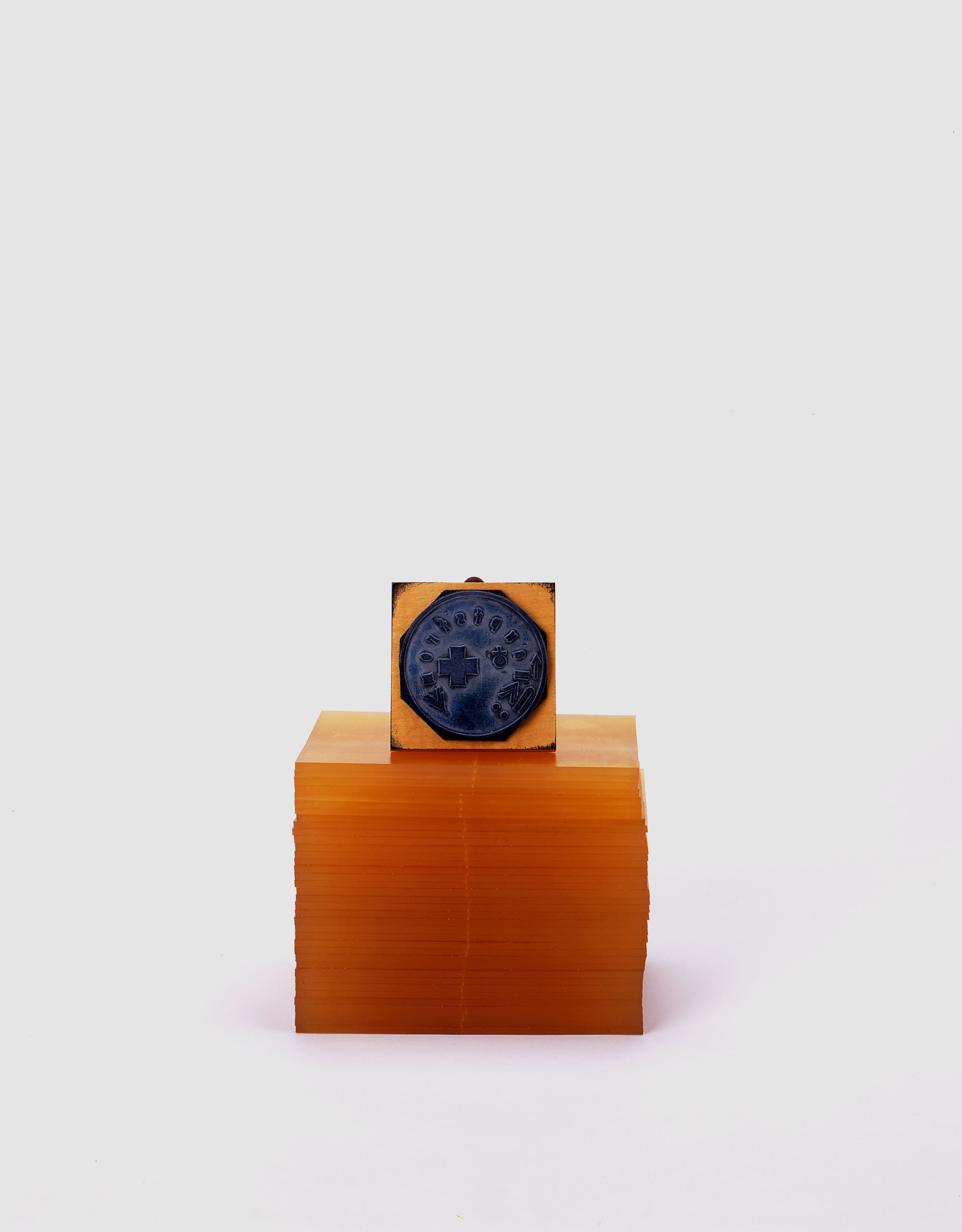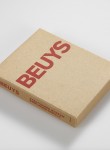Backrest for a Fine-Limbed Person (Hare-Type) of the 20th century A.D.
[Rückenstütze eines feingliederigen Menschen (Hasentypus) aus dem 20. Jh. p. Chr.]
- 1972
- Iron casting
96 x 45 x 15 cm - Edition: 12 plus 2 artist’s copies, embossed ‘Beuys 72’ and numbered
- Publisher: Edition Seriaal, Amsterdam
- Catalogue Raisonné No.: 65
A rigid iron form that resembles a human torso, to which straps have been affixed at four locations, this desiccated, rusting object could well be a breastplate of some kind. It is, however, a therapeutic backrest, used to treat young children with bone deformities. The original from which it was cast was made of plaster, lined with felt, and belonged to Beuys’s neighbour, the artist Gotthard Graubner. By reproducing this implement in iron, Beuys rendered it more rigid and shell-like, enhancing its protective connotations. Through its lengthy descriptive title, he also accorded it a new function. Henceforth, its intended wearer is no longer a child, but rather ‘a Fine-Limbed Person (Hare-Type) of the 20th Century A.D.’
Beuys often used the hare as a symbol in his art. Like all of the animals to which he made reference, he saw in the hare’s behaviour potential models for human conduct. One such quality worth emulating was the hare’s agility, whose connotations of energy and dynamism made it a symbol of creativity for Beuys. As he noted in this connection in a 1969 interview with Willoughby Sharp, ‘Take a hare running from one corner of a room to another. I think this hare can achieve more for the political development of the world than a human being.’1 With these comments the artist was alluding to the need for humanity to grow more flexible and ‘hare-like’ in its behavior, a vital precondition for social creativity and thus for progress.
Yet as Beuys’s title also suggests, the hare-like human being might well be a vulnerable creature: capable of great creative feats, but fine-limbed and therefore lacking strength. Supported by the cast iron backrest, it would acquire the protection needed to carry out its progressive activities.
‘Interview with Willoughby Sharp,’ 1969; as quoted in Energy Plan for the Western Man—Joseph Beuys in America, compiled by Carin Kuoni, (Four Walls Eight Windows: New York, 1993), 82. ↩
© H. Koyupinar, Bayerische Staatsgemäldesammlungen
